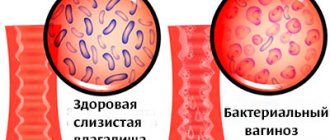Atherosclerosis
is a chronic disease characterized primarily by damage to medium and large arteries. On the inner walls of the arteries, fat deposits form in the form of atherosclerotic plaques, which can grow and block the lumen of the arteries - first partially, and in advanced cases, completely. As a result, the blood supply to the organs to which the artery leads is disrupted. The consequences of atherosclerosis are very serious and can be life-threatening. Atherosclerosis is the cause of coronary heart disease, heart attacks and strokes, and gangrene.
What is stronger: atherosclerosis or cancer?
Atherosclerosis and its consequences for the cardiovascular system (thrombosis, heart attacks, strokes, kidney disorders, leg amputations) take more lives than all types of malignant tumors combined. According to various estimates, every second person dies from cardiovascular diseases, the main cause of which is atherosclerosis .
Atherosclerosis is a chronic inflammatory disease of the arteries that leads to the formation of plaque in the artery wall and narrowing of the lumen of the vessel. Subsequently, the inner surface of the artery is torn and platelets adhere to the narrowing area, a blood clot is formed, which leads to a stop in blood flow. This can cause acute cerebrovascular accident or myocardial infarction. With significant obliteration of the arteries of the legs, a typical symptom appears - intermittent claudication, which can result in amputation of the limb. Damage to the arteries of the kidneys is also very dangerous and causes hypertension.
However, atherosclerosis develops over many years, and in the early stages it can only be detected using special diagnostic methods, for example, vascular ultrasound. The early stages of atherosclerosis are characterized by visible thickening of the intima-media complex.
Intima, media, adventitia are the three components of the artery wall. With the development of atherosclerosis, the thickness of these two walls (intima and media) increases, which indicates inflammation and changes in the structure of the wall.
Heart attacks and strokes are acute circulatory disorders. But atherosclerosis first causes a chronic decrease in blood flow, and therefore the amount of oxygen to organs and cells. In this case, different symptoms may be observed, depending on the greatest localization of the process. For example, noise in the head or weakness in an upright position, leg cramps in a lying position. Symptoms may appear only at the 2nd or 3rd stage of atherosclerosis.
Surgical methods for treating obliterated vessels include stenting, bypass surgery, or mechanical removal of plaque from the vessel wall through an incision. The most common conservative approach is to lower cholesterol (cholesterol) levels in the blood using medications called statins.
A new treatment method is to restore the activity of the lymphatic system, because it is the system that is supposed to remove excess cholesterol from the artery wall.
Atherosclerosis of the cerebral arteries
When cholesterol plaques form and the arteries of the brain narrow, the brain cells experience a lack of blood and nutrients. The following symptoms may indicate this condition:
- periodic dizziness,
- noise in ears,
- headache,
- increased fatigue,
- disturbances in coordination of movements.
The narrowing of the main carotid artery supplying the brain is identified as a separate diagnosis - carotid artery stenosis. Damage to the vessels supplying the brain carries the threat of a serious disease - ischemic stroke of the brain.
Cholesterol is not your enemy!
There are already many publications in foreign scientific literature about the role of the lymphatic system in the development of atherosclerosis (the formation of plaques in the arteries).
The lymphatic system is involved in the regulation of the immune response, inflammation and reverse cholesterol transport. Researchers show that what is responsible for the uncontrolled formation of plaque is not so much low-density lipoproteins, which everyone is up in arms against (from ordinary people and YouTube bloggers to nutritionists and even doctors), but rather the inability of the lymphatic system to remove the consequences of the attack on cholesterol by inflammatory cells.
“In other words, atherosclerosis is a problem of the immune system, the lymphatic system, and only then cholesterol,” explains Nadezhda Aleksandrovna Garyaeva, doctor of medical sciences, professor, lymphologist. Indeed, it makes sense to review the diet for hereditary hypercholesterolemia, but this does not mean that cholesterol itself is harmful.
High levels of total cholesterol and LDL in the blood are indeed a prognostic sign of the development of atherosclerosis. However, the disease does not develop due to cholesterol, but due to a decrease in the function of the lymphatic system against the background of the inflammatory reaction of the immune system to damage in the blood vessels, and cholesterol in this case is the target of attack by immune cells.
Cholesterol is an essential building material in the human body. It is used for the construction of cell membranes, the formation of sex hormones, and the secretion of bile acids. A large amount of cholesterol is contained in the myelin sheath of nerve fibers. Even in the process of Vitamin D synthase, one of the precursors is cholesterol. You can imagine the long-term consequences of artificially blocking cholesterol synthesis in the body. By the way, most of it is synthesized in the liver, and does not enter the body with food.
That is why the world is already discussing the ideas of pharmacological and even genetic correction of lymphangiogenesis - the process of formation of lymphatic vessels in the artery wall. A Russian clinic has developed and patented another approach - enhancing the function of the lymphatic system using lymphotropic injections of official (can be bought at the pharmacy) medications.
In modern medical education, the lymphatic system occupies an insignificant place, which is why in general medical practice you will never be offered what you will find in this article. Moreover, there are heads of universities who still believe that the lymphatic system is not worth any attention.
In this article, we were not only able to briefly and clearly summarize modern knowledge about atherosclerosis, but also revealed the approach of the Lymphatek Clinic to the pathogenetic (affects the mechanisms) treatment of atherosclerosis without the use of cholesterol-binding drugs (statins).
Mechanism of disease development
Let's take a closer look at the mechanisms and three stages of development of atherosclerosis, where it all begins and how it ends.
First stage
Initially, fatty streaks and spots form on the inner walls of the arteries. Due to the inflammatory process, the arterial wall swells, becomes loose and attracts more and more lipid fractions.
Second phase
Atherosclerotic plaques are formed from connective tissue and lipids. At this stage, the plaques are still soft, so with strong blood flow they can rupture and clog smaller vessels.
Third stage
At the last stage, calcium accumulates in the plaques, which makes them harder.
Until now, there are ongoing discussions regarding the mechanisms of development of atherosclerosis. It is assumed that the appearance of atherosclerotic plaques is also associated with certain infections. The role of mutations is also being considered, in which the walls of the arteries become more vulnerable to damaging factors.
What does the lymphatic system do?
The lymphatic system has been considered discovered since 1627 by the anatomist Gasparo Azelli, but Hippocrates first spoke about its individual parts in the 5th century. BC. It consists of lymphatic capillaries, vessels, nodes, lymphoid organs and covers each organ like the circulatory system.
The task of the lymphatic system is to drain and detoxify the pericellular space through the transport of interstitial fluid and the metabolic and breakdown products it contains, antigens and cytokines, immune cells and even lipoproteins.
The lymphatic system is actively involved in the body's immune response. It is in the lymphatic system that lymphocytes mature. It is the lymphatic system that absorbs fats from the small intestine that enter the body with food.
Since the beginning of the 19th century, data have been published that there are lymphatic capillaries in the walls of the artery, which cleanse it of metabolic products, but then no one was interested in this. Since the late 1980s, but especially active in the 2000s, with the active introduction of immunofluorescence imaging methods (markers such as LYVE-1, podoplanin, PROX1), research on the relationship between the lymphatic system and atherosclerosis has increased significantly, and everything has become to their places. Now no one doubts that the artery wall is indeed drained by the lymphatic network.
This means that the lymphatic network must also cleanse the wall of cholesterol plaque. In an experiment, this can be beautifully and demonstratively illustrated as follows. When lymphatic drainage is blocked in an experimental animal, atherosclerosis quickly begins to progress.
It was knowledge about the lymphatic system and its relationship with atherogenesis that formed the basis of our treatment technology.
Drugs that inhibit the absorption of cholesterol in the intestine
The first and so far only drug in this subgroup was ezetimibe. It works primarily in the villous epithelium of the brush border of the small intestine.
The mechanism of action is based on inhibition of the cholesterol transporter in intestinal enterocytes. This reduces cholesterol absorption by approximately 50%. The level of LDL and VLDL also decreases by 20–25% and the HDL content slightly increases.
The maximum effect of the drug develops after two weeks. When used as monotherapy at a standard dose of 10 mg per day, ezetimibe provides a reduction in LDL concentrations by no more than 17–18%, so it is more often used in combination with statins [3].
Side effects
Generally, ezetimibe is well tolerated. In rare cases, it can cause changes in the level of liver enzymes, as well as back pain, arthralgia, and weakness [1, 3].
What should I warn the client about?
If your doctor has prescribed a combination of ezetimibe and a statin, it is important to follow the recommendations and take both drugs to achieve optimal lipid-lowering effects.
How do plaques form?
Atherosclerosis is a systemic multifactorial disease. The initial etiological causes of atherosclerosis are laid long before the formation of plaques visible on ultrasound or MSCT in the walls of blood vessels. Later, the mechanisms of damage to the vessel wall, the formation of foam cells, the formation of plaque and calcifications in it directly join the causal background.
The process of development of atherosclerosis can be simplified into six stages:
- First, under the influence of various behavioral factors, an unfavorable genetic background is realized: homo- or heterozygous changes in genes. Genetic variations can manifest themselves in the form of changes in the structure and function of the cardiovascular system, lack of production of any substances for an adequate immune response and metabolism.
- Damage occurs to the endothelium (the layer of cells that covers the inside of the artery) due to arterial hypertension, chronic viral load, diabetes, smoking and other factors. Several mechanisms are involved: metabolism, neuroendocrine regulation, glucorticoid activity, immune response and autoimmune mechanisms.
- During inflammation, under the influence of white cells: neutrophils, macrophages and lymphocytes, additional loose connective tissue is formed in the inner wall of the vessel (intima) to compensate for the damaged area of the endothelium. It turns out to be tropic to cholesterol molecules and foam cells, that is, it simply attracts components from which a plaque is then formed.
- Low-density lipoproteins (LDL) come into the picture next. They are often simply called bad cholesterol. When penetrating the endothelium, deeper into the intima of the artery, LDL is oxidized and captured by a macrophage - one of the immune cells - and a so-called foam cell is formed. But for some reason (probably due to the same genetic defect), the phagocytic activity of immune cells is reduced, and the physiological lysis of this cell is disrupted and does not complete. Normally, unnecessary substances should break down into water and carbon dioxide. But this doesn't happen. As a result, the foam cell or its decay products are retained in the intimal structure.
- Normally, excess cholesterol and cell breakdown products from the artery wall should be drained by the lymphatic system. In the adventitia of the artery there are lymphatic capillaries that drain the wall, and excess protein, and everything unnecessary in the wall exits into the lymphatic channel and is sent through the lymphatic vessels to the lymph nodes. The problem is that the activity of the lymphatic system is reduced, and the lymphatic system cannot cope with the timely removal of plaque from the artery wall. This could be, for example, due to bacterial or viral infection of the lymph nodes.
- Now comes the interesting part, and it has to do with immunity. Once macrophages detect a potential enemy, LDL, they release chemicals that attract even more immune cells to the artery wall. As a result, even more foam cells are formed and the plaque continues to grow.
Thus, it is important to understand that atherosclerosis is an autoimmune disease that perpetuates itself.
Firstly, there is a proliferation of connective tissue, which the immune system perceives as foreign and, therefore, enhances the immune response.
Secondly, with the development of the atherosclerotic process, the body triggers a protective reaction, and the lymphatic network in the adventitia of the artery begins to grow. This is necessary so that excess amounts of breakdown products and lipoprotein are removed through the lymphatic system. However, this process also has a downside. More extensive lymphatic drainage increases the traffic of immune cells to the lymph nodes, thereby further increasing the immune response and therefore inflammation.
Thus, the process of atherogenesis cycles, and the disease progresses. Even if you sharply reduce the amount of cholesterol in the blood, this can negatively affect your health, but it will not affect atherosclerosis at all. As a result, the process of atherosclerosis reaches the borderline stage, when surgical treatment is already recommended, despite taking statins.
Causes of atherosclerosis
It has been established that the following factors favor the development of atherosclerosis:
- smoking. Nicotine and tars contained in tobacco have a negative effect on blood vessels;
- physical inactivity (maintaining a sedentary lifestyle);
- unbalanced diet, primarily abuse of fatty and cholesterol-rich foods;
- alcohol abuse;
- increased emotional reaction (susceptibility to stress);
- arterial hypertension;
- overweight (obesity);
- diabetes.
Factors contributing to the development of atherosclerosis also include the so-called non-modifiable factors (that is, factors that a person cannot do anything about):
- age (the risk group includes persons over 45 years old);
- gender (men are automatically at risk);
- presence in the family history of cases of early atherosclerosis.
Four components of the treatment of atherosclerosis
So, a patient with an active atherosclerotic process comes to the doctor. What to do? The main task is to stop the formation of plaque and start the reverse process. Obviously, the genetic background cannot be corrected, just like the damaged endothelium. We also found that cholesterol itself is not the starting point of the disease. We have shown that atherosclerosis actively develops due to immune inflammation, which maintains itself.
Thus, to stop atherosclerosis and reduce the size of the plaque, you need to launch a compensatory mechanism - the lymphatic system. To do this, the clinician’s focus should be on neutralizing the general inflammatory background, “balancing” local immune reactions and, most importantly, enhancing the activity of the lymphatic system to improve the drainage of “plaque” cells. At the same time, the patient must gradually make changes to his behavior pattern and, of course, start with diet.
The diet should be aimed not so much at reducing cholesterol, but at improving general metabolic processes and reducing the amount of foods that cause specific inflammation.
In other words, to remove plaque from the artery wall, you need to reduce the number of activated macrophages and speed up the removal of foam cells.
So here's what to do:
- Reduce the number of factors that provoke inflammation inside the artery wall
- Carry out drug correction of immunity based on an immunogram with stress tests
- Perform lymphotropic therapy to improve the functions of the lymphatic system in the area affected by atherosclerosis
- Perform infusion drug therapy to normalize metabolic processes in tissues and artery walls
Combined lipid-lowering therapy
In some cases, doctors prescribe a combination of lipid-lowering drugs with different mechanisms of action. The most common indication is severe hyperlipidemia. Most often, fibrates are used in combination with statins. Nicotinic acid is combined with other hyperlipidemic drugs very carefully, under the supervision of a physician [6].
If a two-component treatment regimen is ineffective, three drugs can be used at once, for example, statins, cholesterol absorption inhibitors and nicotinic acid [3].
Sources
- Kharkevich D.A. Pharmacology. 10th ed. M.: GEOTAR-Media, 2010. – 908 p.
- Morris Brown, Peter Bennett. Clinical Pharmacology 11th Edition, 2012.
- Clinical pharmacology and pharmacotherapy: textbook. – 3rd ed., add. and processed / ed. V.G. Kukesa, A.K. Starodubtseva. – M.: GEOTAR-Media, 2012. – 832 p.
- Bardal SK, Waechter JE, Martin DS Applied pharmacology. – Elsevier Health Sciences, 2011.
- Goodman and Gilman's The Pharmacological Basis of Therapeutics, Twelfth Edition
- Janashia P.Kh. et al. Drug lipid-lowering therapy. Medi.ru URL: https://medi.ru/info/3448/ (access date 05/29/2020).
How is the treatment carried out?
The basis of treatment is infusion and injection drug therapy. Treatment is carried out in courses of 10-15 treatment visits with a break of 3-4 months. The total number of courses varies from 1 to 6, depending on the stage of the process and other individual characteristics. In some places the plaques go away completely and immediately, in others it takes time.
The treatment is carried out on an outpatient basis and is structured in such a way that the main result is achieved during the break between courses: we start the work of the lymphatic system, reduce inflammation - and the lymphatic system continues to work even when no medicine is administered.
The number of procedures and duration of required courses depends on the stage of the process and the presence of concomitant diseases. In cases of advanced atherosclerosis with almost complete obliteration of blood flow, for example, in the limbs, and when the task is to save the limb from amputation, we can recommend treatment up to 2 times a day at the first stage.
If there is significant damage to the heart vessels, but in the absence of direct indications for bypass or stenting, increased requirements are imposed on the patient’s compliance with the medical and protective regime.
Diagnostic monitoring of the condition of the arteries of the legs and neck is carried out using an ultrasound machine; monitoring of the condition of the heart vessels is carried out using multislice computed tomography.
Which doctor treats vascular atherosclerosis?
If atherosclerosis is suspected, an examination by a specialist is necessary:
- Angioneurologist - for atherosclerosis of cerebral vessels;
- Cardiologist - for atherosclerosis of the heart vessels;
- Vascular surgeon - for signs of diseases of the arteries of the arms or legs, neck, chest and abdominal cavity.
It is necessary to see a specialist (vascular surgeon) if you have one or more risk factors for atherosclerosis, and also have complaints characteristic of arterial diseases. It is especially important to seek qualified help during the initial manifestations of the disease, when it is possible to prevent the development of severe complications of atherosclerosis.
Before prescribing instrumental diagnostic methods, the doctor must evaluate the patient’s complaints. Collect information about past illnesses and past treatments. An objective examination provides detailed information about the severity and extent of the disease.
In some cases, the diagnosis of atherosclerosis can be excluded at the stage of the initial examination. If vascular atherosclerosis of one location or another is detected, the doctor may prescribe an additional examination.
Laboratory and instrumental studies that can be used to diagnose atherosclerosis:
- ultrasound duplex scanning of blood vessels,
- X-ray contrast angiography,
- CT scan,
- Magnetic resonance imaging,
- ECG,
- treadmill test,
- lipidogram, etc.
Treatment results
Depending on the initial localization of the process, already during the first course of treatment, the patient clinically notices the following improvements:
- Reducing noise in the head and headaches
- No pain when walking
- Disappearance of discomfort in the heart area during physical activity
The proposed treatment method is not generally accepted because it goes against the standards of the pharmaceutical industry. Currently, in general practice, the problem of atherosclerosis is dealt with therapeutically by cardiologists, and, if immediate surgical intervention is necessary, by vascular surgeons.
In addition, the treatment method requires in-depth knowledge of the morphology and physiology of the lymphatic system. Here, using the example of the treatment of lymphedema, we have already discussed why doctors in ordinary hospitals do not treat lymphedema.
Despite the fact that the first patient was treated 13 years ago (he managed to save his legs due to obliterating atherosclerosis of the vessels in the knee area), we still continue to accumulate statistical data and take a limited number of people for treatment. It is possible to come for treatment from another city. Treatment technologies are patented in the Russian Federation and can only be safely used at the Lymphatek Clinic. We select patients for whom treatment is indicated individually based on their application.
LEARN ABOUT TREATMENT POSSIBILITIES
You can learn more about the treatment process and some of the results in other blog articles. There are interesting videos with patient reviews and comments from leading doctors.
- Vascular atherosclerosis. Lymphologist's explanation.
- Atherosclerosis of leg vessels. Case of Yuri's treatment
- Atherosclerosis of the vessels of the neck and heart. Analysis of Valery's treatment.
Atherosclerosis of the arteries of the lower extremities
Damage to the arteries of the lower extremities is called obliterating atherosclerosis. People over 65 years of age, especially men, are susceptible to it. This disease manifests itself in the following symptoms:
- pain in the calves, cramps at rest;
- pain when walking, causing you to limp;
- numbness in the legs, fatigue when walking;
- the appearance of non-healing wounds, and in advanced cases - ulcers.
If you do not consult a doctor in the presence of such symptoms, then there will be a threat of limb amputation as the only treatment measure for extremely advanced cases of obliterating atherosclerosis.
Bibliography
When compiling this article, we deliberately simplify some of the material so that it is understandable for non-specialists. If you are a doctor, we will be happy to answer your questions. Write or call us to discuss details. To prepare this material, the following publications were used:
- Girard JP, Moussion C., Forster R. HEVs, lymphatics and homeostatic immune cell trafficking in lymph nodes. Nat. Rev. Immunol. 2012;12:762–773. doi: 10.1038/nri3298.
- Randolph GJ, Miller NE Lymphatic transport of high-density lipoproteins and chylomicrons. J. Clin. Investig. 2014;124:929–935. doi:10.1172/JCI71610.
- Aspelund A., Robciuc MR, Karaman S., Makinen T., Alitalo K. Lymphatic System in Cardiovascular Medicine. Circ. Res. 2016;118:515–530. doi: 10.1161/CIRCRESAHA.115.306544.
- Alitalo K., Tammela T., Petrova TV Lymphangiogenesis in development and human disease. Nature. 2005;438:946–953. doi: 10.1038/nature04480.
- Moore KJ, Sheedy FJ, Fisher EA Macrophages in atherosclerosis: A dynamic balance. Nat. Rev. Immunol. 2013;13:709–721. doi: 10.1038/nri3520.
- Rademakers T., van der Vorst EP, Daissormont IT, Otten JJ, Theodorou K., Theelen TL, Gijbels M., Anisimov A., Nurmi H., Lindeman JH, et al. Adventitial lymphatic capillary expansion impacts on plaque T cell accumulation in atherosclerosis. Sci. Rep. 2017;7:45263. doi: 10.1038/srep45263.
- Milasan A., Ledoux J., Martel C. Lymphatic network in atherosclerosis: The underestimated pathway. Future Sci. O.A. 2015;1:FSO61. doi: 10.4155/fso.15.61.
- Camare C., Pucelle M., Negre-Salvayre A., Salvayre R. Angiogenesis in the atherosclerotic plaque. Redox. Biol. 2017;12:18–34. doi: 10.1016/j.redox.2017.01.007.
- Randolph GJ Mechanisms that regulate macrophage burden in atherosclerosis. Circ. Res. 2014;114:1757–1771. doi: 10.1161/CIRCRESAHA.114.301174
- Johnson RA Lymphatics of blood vessels. Lymphology. 1969;2:44–56.
- Drozdz K., Janczak D., Dziegiel P., Podhorska M., Patrzalek D., Ziolkowski P., Andrzejak R., Szuba A. Adventitial lymphatics of internal carotid artery in healthy and atherosclerotic vessels. Folia Histochem. Cytobiol. 2008;46:433–436. doi: 10.2478/v10042-008-0083-7.
- Kutkut I., Meens MJ, McKee TA, Bochaton-Piallat ML, Kwak BR Lymphatic vessels: An emerging actor in atherosclerotic plaque development. Eur. J. Clin Investig. 2015;45:100–108. doi: 10.1111/eci.12372
- Xu X., Lin H., Lv H., Zhang M., Zhang Y. Adventitial lymphatic vessels—An important role in atherosclerosis. Med. Hypotheses. 2007;69:1238–1241. doi: 10.1016/j.mehy.2007.04.007.
- Martel C., Randolph GJ Atherosclerosis and transit of HDL through the lymphatic vasculature. Curr. Atheroscler. Rep. 2013;15:354. doi:10.1007/s11883-013-0354-4.
- Huang LH, Elvington A., Randolph GJ The role of the lymphatic system in cholesterol transport. Front. Pharmacol. 2015;6:182. doi: 10.3389/fphar.2015.00182.
- Csányi G, Singla B. Arterial Lymphatics in Atherosclerosis: Old Questions, New Insights, and Remaining Challenges. J Clin Med. 2019;8(4):495. Published 2022 Apr 11. doi:10.3390/jcm8040495
- Levin Yu.M. Fundamentals of therapeutic lymphology. - M.: Medicine, 1986. - 288 p., ill.










